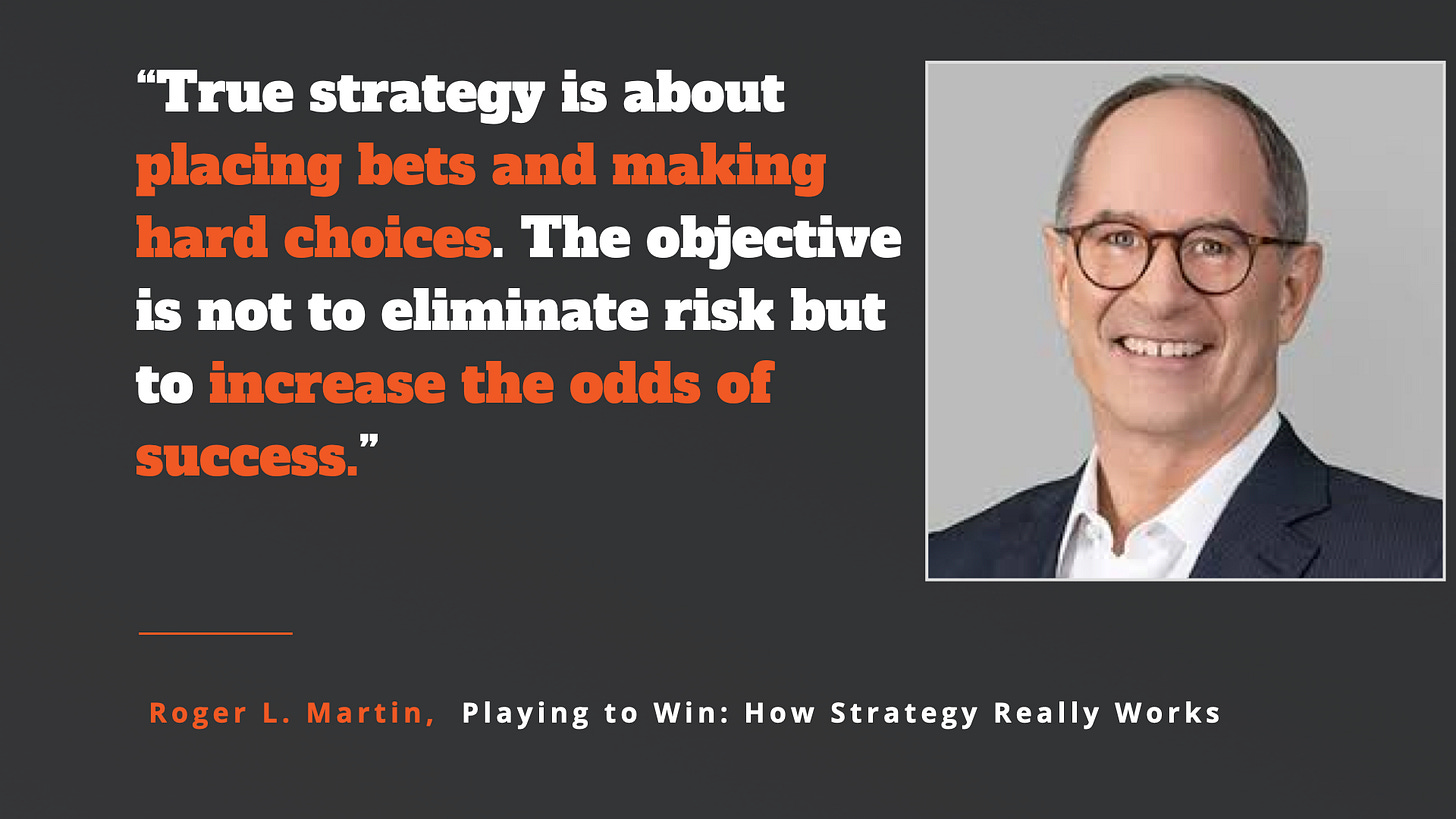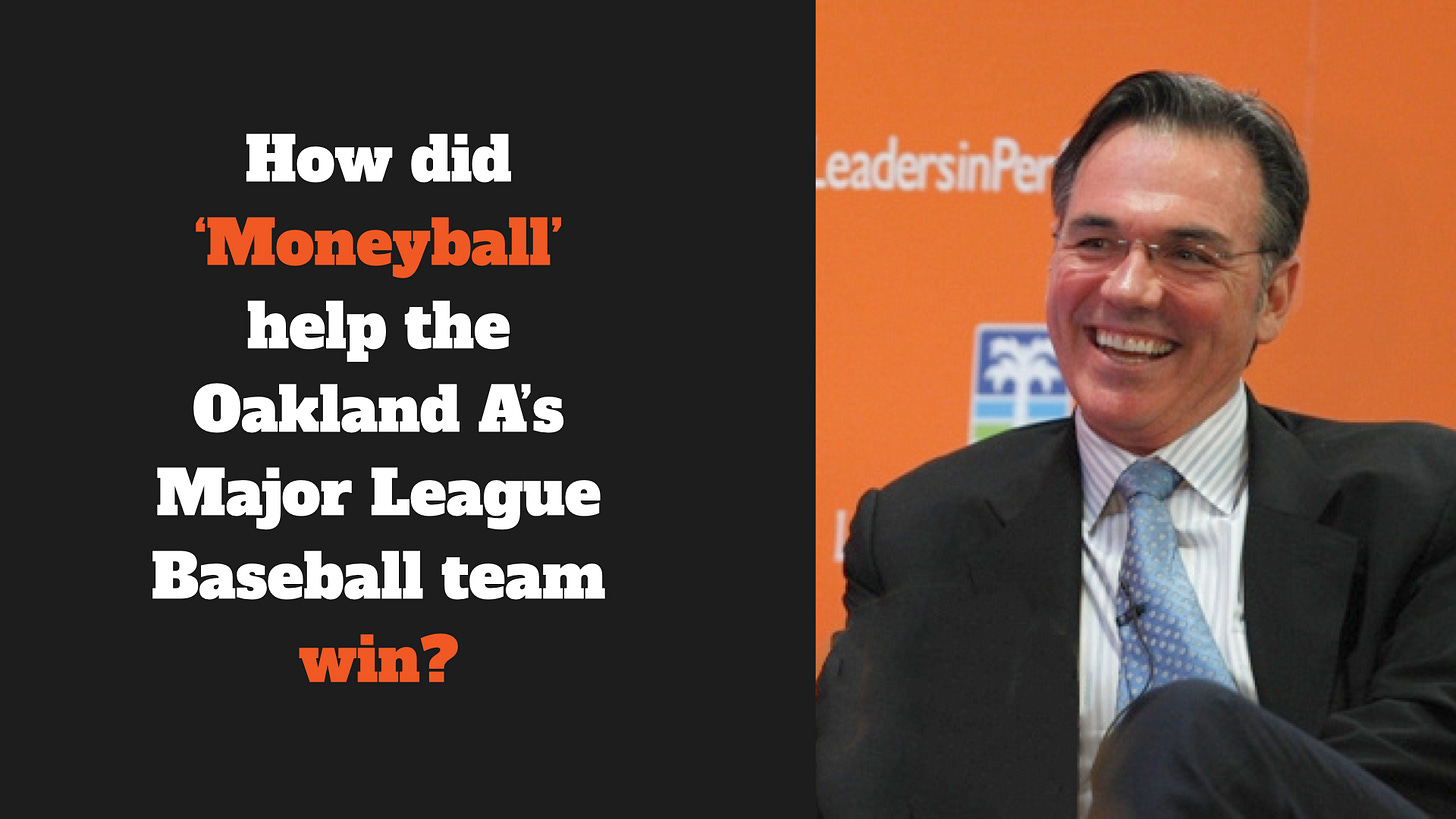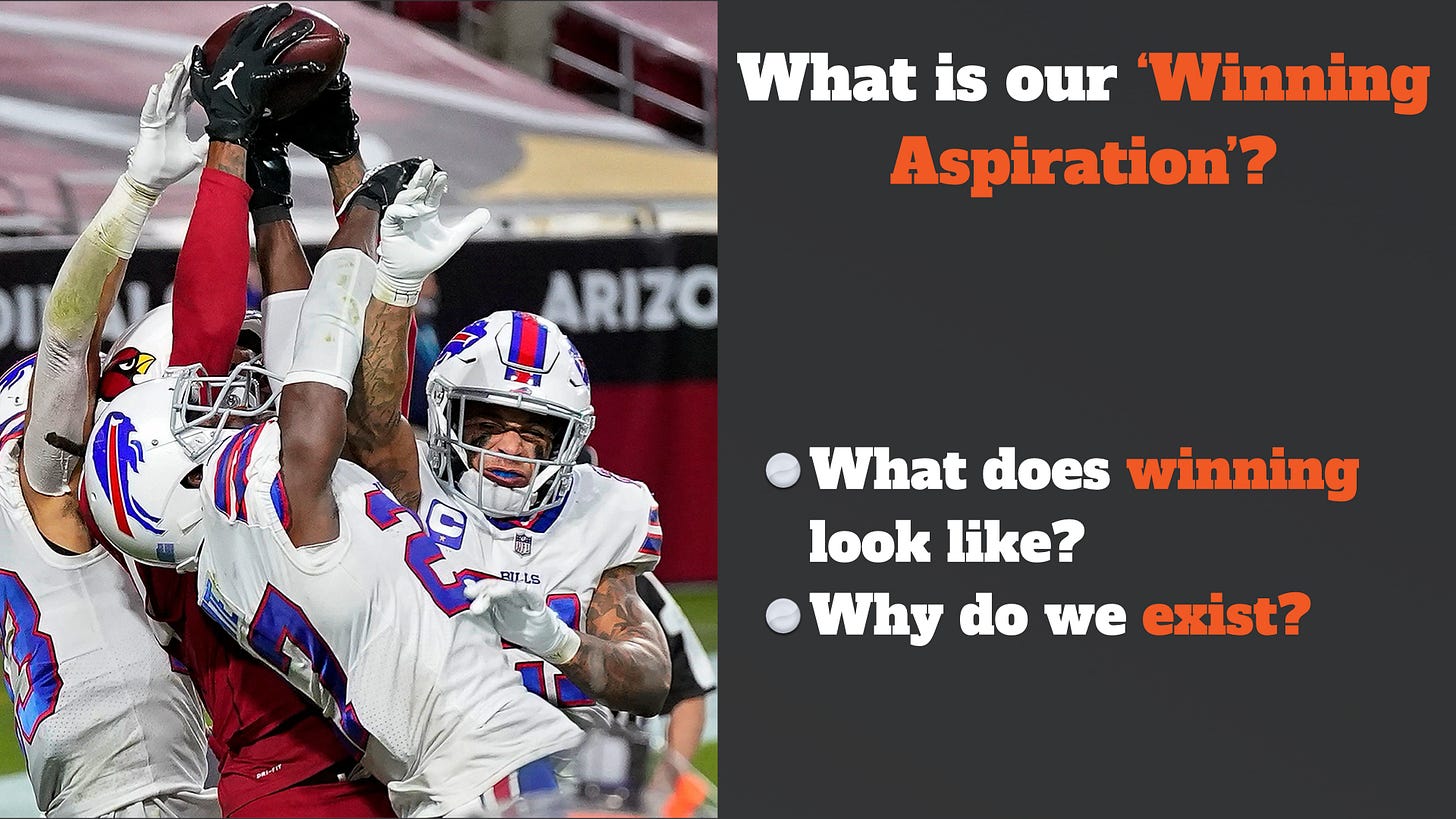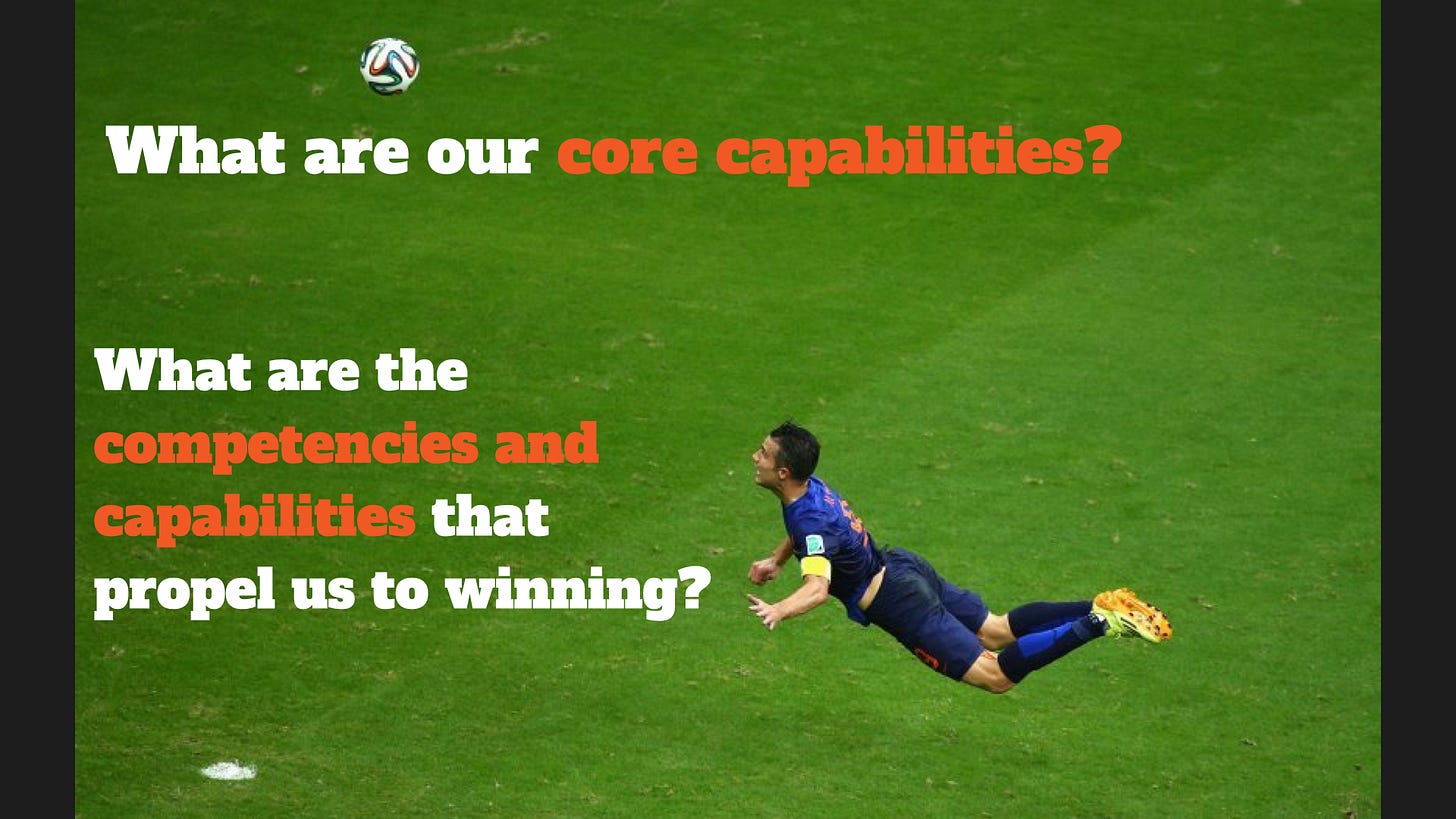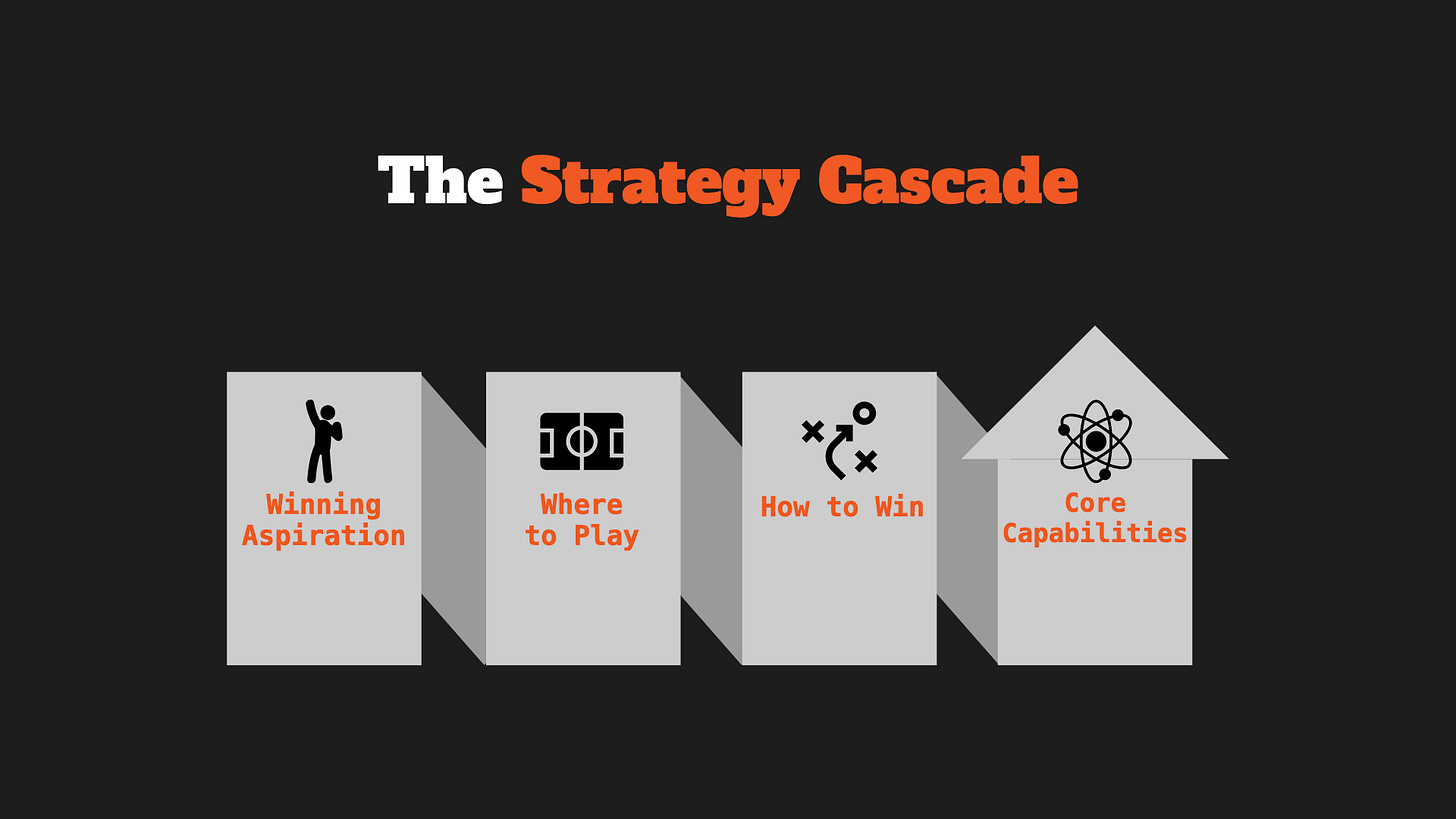The Comprehensive Guide to Strategy For Product Managers
Foundational Principles of Strategy You Can Use In Any Situation
This week I was delighted to be given the opportunity to give this presentation on product strategy to a group of product managers.
For those who couldn’t attend, I am sharing the first half of that presentation right here. After reading this, you will have a foundational understanding about the core components of strategy that you can use while conducting your own strategy creation exercise. Without further ado…
What is Strategy?
Strategy isn't about finding a risk-free path forward. It's about making calculated bets based on careful analysis and deep understanding of your context. Every major decision, every innovative leap, every market entry involves uncertainty.
Trying to eliminate all risks is impossible. Our job is to intelligently manage and select which risks to take. This means making hard choices: saying no to good opportunities to focus on potentially great ones and investing resources in uncertain but promising directions.
In essence, strategy is about increasing our odds of success while accepting that certainty is never guaranteed.
Strategy Success Stores: Apple & The Oakland A’s
Apple
Did you know that in 1997 Apple was on the verge of bankruptcy?
Windows 95 had dealt a devastating blow to Apple's market share. The company was bleeding money, losing direction, and running out of time. In September 1997, a familiar face walked back through Apple's doors. Steve Jobs. He became the interim CEO. What happened next would become an amazing turnaround story.
When Steve Jobs returned to Apple in 1997, he didn't just make incremental changes - he orchestrated a complete reinvention of the company. His strategy was brutal in its simplicity, yet brilliant in its execution.
First, Jobs slashed the product line: from 15 desktop models to just one. The message was clear: do fewer things, but do them exceptionally well. He didn't stop there - printers, peripherals, software projects - all gone. Five of Apple's six national retailers? Eliminated.
But Jobs wasn't just cutting - he was learning from Apple's rivals. From Microsoft, he secured a $150 million investment, turning his biggest competitor into an ally. From Dell, he borrowed the playbook on supply chain efficiency.
Then came the move to direct sales. Jobs launched Apple's online store, bypassing traditional distributors entirely. This wasn't just about selling products - it was about controlling the entire customer experience. The impact of this new distribution channel on the future of e-commerce can’t be overstated.
Jobs never promised to dominate the market. He accepted Apple's position as a niche player while thinking about the next big thing.
His patience would pay off spectacularly in the early 2000s with the iPod and iTunes, paving the way to the revolutionary iPhone.
The Moneyball Oakland A’s
The Oakland A’s in the late 1990s were a small-market team with one of baseball's lowest payrolls, struggling to compete against the richest teams. While the New York Yankees were spending over $100 million on payroll, the A's were working with just a third of that.
Year after year, they watched their best players get taken by wealthy teams. The conventional wisdom was clear: without money, you couldn't compete. Period.
The A's front office faced an impossible question: How do you win games in a system that's financially rigged against you? The answer would come from an unlikely source - a failed former player turned General Manager named Billy Beane, who was about to turn baseball's century-old traditions upside down.
What Billy Beane did in Oakland, known as Moneyball, wasn't just about finding bargains - it was about completely reimagining how to evaluate baseball talent. His approach was revolutionary because it challenged a century of baseball strategy.
Think about this: Baseball had been evaluating players the same way since the 1800s. A few very old metrics had become sacred in baseball. But what if they were measuring the wrong things?
Enter Bill James, a baseball analyst who argued that these traditional stats were fundamentally flawed. Beane took James's ideas and turned them into a competitive advantage. Instead of chasing players using the old metrics, he found players who were good at getting in scoring position, no matter how. It didn't matter if they were a big hitter or looked good in a uniform. If they could get in scoring position, Beane wanted them.
This wasn't just gut feeling - it was pure mathematics. Beane brought in financial analysts to create sophisticated statistical models, treating baseball talent like a market with inefficiencies to exploit.
The baseball establishment thought his strategy was crazy. But while they were paying premium prices for the biggest hitters, Beane was building winning teams with players nobody else wanted. His A's made the playoffs year after year, competing with teams that had three times their payroll.
In essence, Beane proved that in baseball, just like in business, one of the keys to success is being smarter about the choices you make.
How to Create an Effective Strategy (or one that has a chance to be effective)
For a strategy to have a chance to be effective, it must answer these four questions.
1. What is our Winning Aspiration?
What does winning actually look like for us? This is about defining victory in concrete, meaningful terms.
A winning aspiration goes beyond just revenue - though that's certainly part of it. It answers the deeper question of why we exist and what meaningful difference we want to make in our customers' lives. This becomes our guiding principle for which every strategic choice that follows is based on.
2. Where will we play? (And not play)
The most dangerous words in strategy are "we want to be everything to everyone." Every great strategy is as much about choosing where NOT to play as it is about where to compete.
Each 'where to play' choice comes with trade-offs. When we choose to focus on enterprise customers, we're intentionally saying no to SMBs. When we target specific verticals, we're deliberately passing on others.
These aren't just marketing decisions - they're fundamental choices that shape everything from our product roadmap to our resource allocation. The key is to find a playing field where our unique capabilities can create the most value, where we can genuinely win.
Amazon started by just selling books. Facebook began with college students. Their focus allowed them to dominate their chosen space before expanding.
3. How will we Win?
Once we've chosen our playing field, the next question is: How do we win there?
Why should customers choose us over every other option available to them? Our value proposition needs to be specific, meaningful, and defensible.
For us as product managers, this means being ruthlessly clear about what makes our product uniquely valuable to our chosen customers. What distinctive capabilities or advantages do we have that others can't easily copy?
4. What are our core capabilities?
Core capabilities must directly connect to our 'how to win' strategy.
Pixar's core capability is best in class animation as well as their unique storytelling culture where any employee can critique a film in development. This capability directly enables them to create emotionally resonant animated films that appeal to both adults and children.
For product managers, this means being clear about what distinctive capabilities we need to invest in. In the sports data world for example, having the highest quality is a developed by investing in all of the necessary product and workflow features to make that outcome happen.
Putting it together
Roger Martin calls this the Strategy Cascade where choices flow into and reinforces the next choice. It's not a checklist - it's a cascade of interconnected decisions.
Note: There is a fifth component to this cascade that identifies management systems and processes to support the journey to winning. I have excluded it only because it is my opinion that a strategy can succeed despite an organization having looser internal management processes.
Your winning aspiration sets the destination. Where to play selects the field where you'll compete. How to win defines your game plan for that specific field. And your core capabilities are what you will build to execute that game plan.
If any level doesn't align with the others, the strategy falls apart. You can't win in enterprise software if your capabilities are built for consumer apps. You can't aspire to be the market leader while playing in every possible segment with no distinctive advantage. Every strategic choice must reinforce the others, creating a coherent story of how we'll succeed in the market.
While the entire cascade matters, 'How to Win' and 'Core Capabilities' are where product strategy live.
Our product decisions directly shape how we deliver value to customers. Every feature, every workflow, every design choice must reinforce our winning proposition.
Meanwhile, our core capabilities determine what we can actually execute. Amazon could envision same-day delivery because they had built the logistics capabilities to make it possible. Netflix could shift to streaming because they had the tech capabilities to make it work. Yes, there was a time when Netflix was a DVD delivery company.
This is why great product managers actively shape both the value proposition and the capabilities needed to deliver it.
Reforge’s Strategt Stack x Strategy Cascade
While strategy frameworks might use different language, they're often telling us the same fundamental story. This table shows how Martin's Strategy Cascade and Reforge's Strategy Stack complement each other.
Notice the natural progression: We start with the big picture - the winning aspiration that drives everything. This cascades down to company strategy, where Martin's 'where to play and how to win' choices come into focus. Then we zoom into product strategy, which zeroes in on 'how to win and core capabilities.' Finally, we get to the roadmap - the tactical execution of these strategic choices.
Each level has its own clear owner and timeframe. Leadership typically owns the long-term vision, while product teams own the shorter-term execution. But they're all connected - each level translating and implementing the choices made above it.
It's a practical way to ensure everyone, from the CEO to individual PMs, understand how their decisions connect to the bigger picture.
Takeaways
Strategy is about purposeful navigation through uncertainty on our way to winning. As we've explored through the stories of Apple and the Oakland A's, truly transformative strategies are born not from avoiding risks, but from making intelligent, calculated choices that leverage unique insights and capabilities.
For product managers, this means more than just following a framework. It's about cultivating a strategic mindset that:
Embraces difficult trade-offs
Sees constraints as opportunities for innovation
Connects every product decision to a larger, coherent vision
Remember, your strategy is a living. It's not a rigid plan, but a dynamic narrative that evolves as you learn, experiment, and adapt. The most successful product leaders are those who can:
Clearly articulate their winning aspiration
Make deliberate choices about where to play and how to win
Continuously build and refine the capabilities that set them apart
The next time you're crafting a product strategy, ask yourself:
What meaningful difference are we truly trying to make?
Where can we uniquely create value?
What capabilities do we need to develop to make our vision a reality?
Strategy requires creativity, analytical thinking, and the courage to make tough choices. Embrace the uncertainty, trust in your team's capabilities, and keep pushing the boundaries of what's possible.
Your strategic journey starts now.




